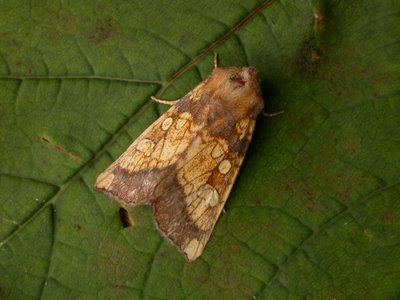Migrants...
One of the main reasons to run a moth trap in coastal UK is the chance to catch some migrants. There are many species to choose from. Some are annual, sometimes in good numbers, whilst others are rare. There are also the super-rare species that really grab people's attention. Below are some that have occured on Thanet recently. I'll go into more detail on another post.
 This is a really lovely-looking migrant pyralid called Antigastra catalaunalis. Very rare in Kent though several were recorded this autumn, including two on Thanet.
This is a really lovely-looking migrant pyralid called Antigastra catalaunalis. Very rare in Kent though several were recorded this autumn, including two on Thanet. The rather smooth Clancy's Rustic. The first records for Thanet were just last autumn. This year there have been well over 50 between the Thanet traps. This is perhaps a species undergoing colonisation of the SE Kent region. I was trilled with my first...then I caught a bunch more...
The rather smooth Clancy's Rustic. The first records for Thanet were just last autumn. This year there have been well over 50 between the Thanet traps. This is perhaps a species undergoing colonisation of the SE Kent region. I was trilled with my first...then I caught a bunch more...
 A Ni Moth. Formerly quite rare on Thanet but there have a been a few this autumn, including two from my trap. We get this moth in Ontario but it is called Cabbage Looper there...think I prefer the British name.
A Ni Moth. Formerly quite rare on Thanet but there have a been a few this autumn, including two from my trap. We get this moth in Ontario but it is called Cabbage Looper there...think I prefer the British name.
 The brilliant migrant pyralid Palpita vitrialis. This distinctive moth is an annual visitor to Thanet but, as with everything else this autumn, there have been quite a few of late. This silky devil is always a welcome treat in the trap!
The brilliant migrant pyralid Palpita vitrialis. This distinctive moth is an annual visitor to Thanet but, as with everything else this autumn, there have been quite a few of late. This silky devil is always a welcome treat in the trap!


















